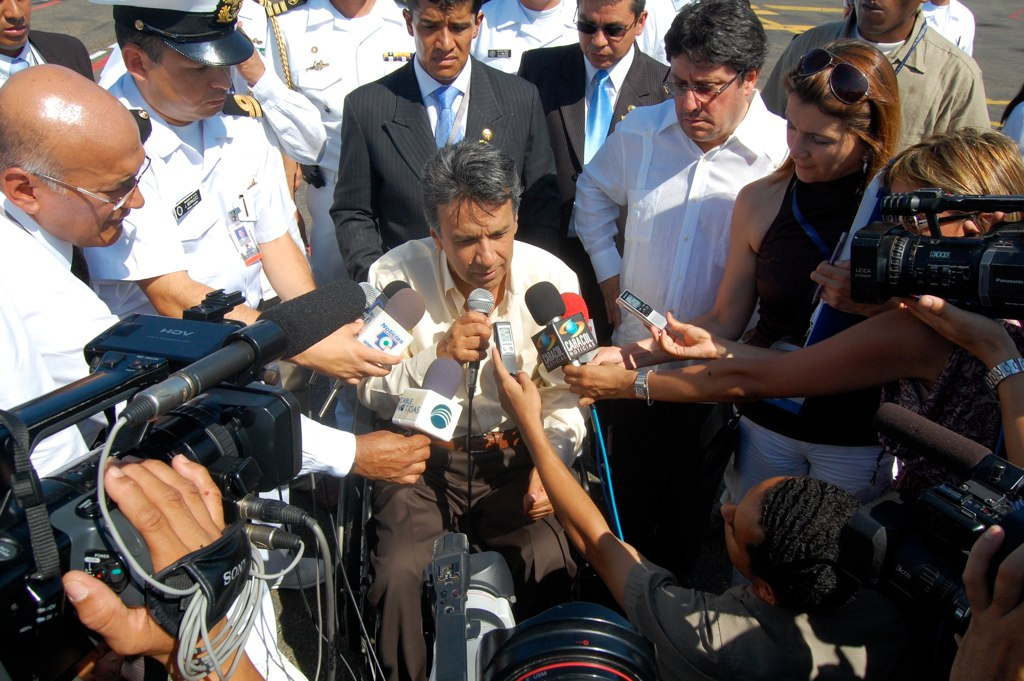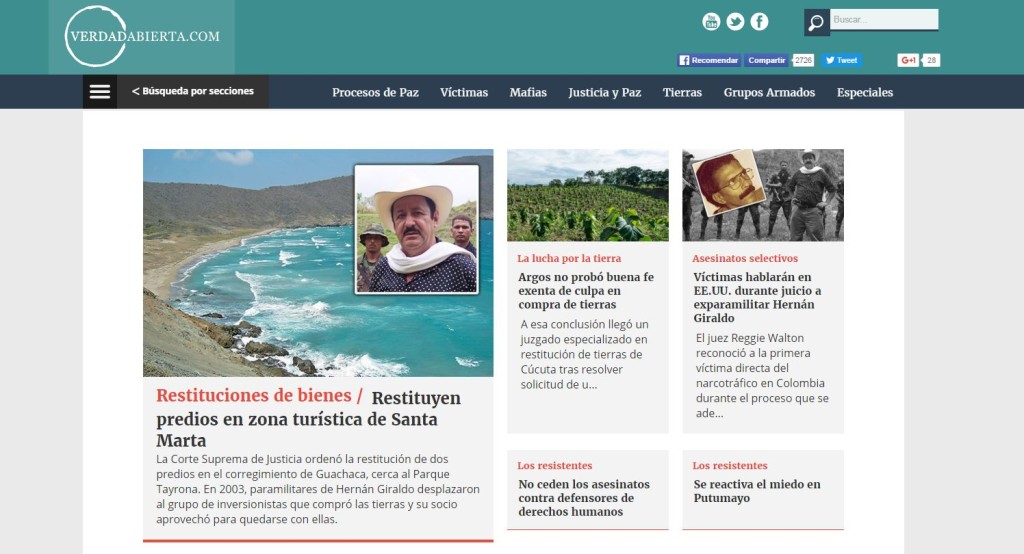By Melissa Nolan
The clock continues to tick for the Colombian government and the Revolutionary Armed Forces of Colombia (FARC) to sign a peace accord. There is no doubt that this negotiation process is historic. In the time it took the negotiating parties to decide on one agenda item in 1998, the two groups have already agreed on five of the intended six accords. What is different this time? Several things, but one of the most important is that this peace process is taking place in the age of new media. Emerging digital media sites are tackling controversial and challenging topics at a pace, until now, out of the ordinary. As news unfolds, details about the recent wiretapping scandal, extrajudicial killings, and kidnappings become public knowledge as they are transmitted instantly across the country. Bold journalists are covering stories that in the past editors might have suppressed out of fear of upsetting those in power. In an effort to promote freedom of information and expression, new media is strengthening democratic institutions and promoting peace.
New Age Problems, New Age Media
Within the last decade, the media landscape in the country has not only moved away from printed press towards online media, but it has also changed its focus. Web platforms like La Silla Vacía and VerdadAbierta are leading examples of this trend. These two investigative journalism platforms publish analysis and reports on topics ranging from illegal campaign funding to testimonies from victims of the armed conflict on human rights violations. The journalists research and publish articles on problems such as corruption, drug trafficking, and organized crime links to politics, often revealing harsh realities about Colombian politics and society. The media’s truth telling role has been important in uncovering stories about the actions of conflict actors and bringing to light the histories of the victims.
Not only do the stories capture the attention of the audiences, but the medium in which these outlets present information also intrigues readers. Both websites use technology in innovative ways that incorporate multimedia and user-friendly graphics to reach younger and more tech savvy people. For example, readers are drawn to visuals that, with a click on a map, can take readers to specific regions to learn about violence. Or, they might prefer to hear about the conflict from victims and watch their personal account of how the conflict touched their lives.
How the Press can Support Peace
In the transition to a post-conflict setting, Colombian media can and will play an important role in defending democracy and promoting peace. Here are ways the media are already helping to promote peace and a list of recommendations of how it can help in a post-accord Colombia:
- Votes: Media outlets should focus their reporting on the content of the accord once the government and FARC sign a peace deal. Educating the public will help citizens understand what it means to vote “Yes” for peace.
- Victims: Media should continue to give a voice to conflict victims. Investigative journalism platforms already do an excellent job of placing victims at the center of the discussion on the beneficiaries of peace. Their website portals exhibit victims’ testimonies, videos, and photos alongside conflict analysis.
- Voices: Media should continue to promote freedom of expression by engaging local citizens. Emerging news outlets are creating space on their online platforms for people to send in stories and gain publication. Las2Orillas employs this methodology and includes their stories, after verification, on its “Citizens’ Notes” page of its online portal. Therefore, citizen reporters are able to have their voices heard and to contribute to the local and national dialogue.
- Variations: Media should continue to highlight regional news regarding peace implementation. For example, coverage about local cases of land restitution, the victims’ law, and transitional justice, among other topics, has successfully informed the country about what is taking place in the different territories. In this way, the media can help bridge the gap between urban and rural populations.
- Verdades (Truths). Media should continue to uphold their role as truth seekers investigating controversial topics. Journalists have taken on the dangers and risked their lives to expose stories that would alter the status quo and balance of power in society. This has had a significant impact in how citizens view everything that is taking place in the country.
Melissa Nolan is an Assistant Program Officer in the Latin America & Caribbean division at the National Endowment for Democracy.



Comments (0)
Comments are closed for this post.